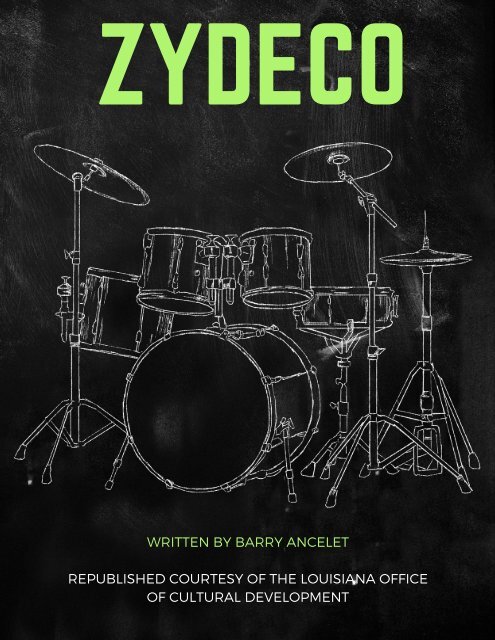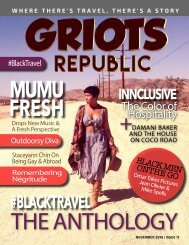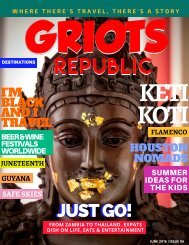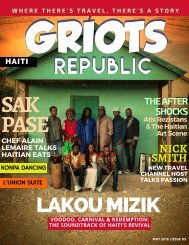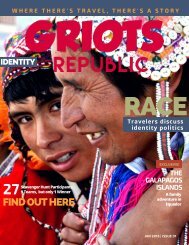GRIOTS REPUBLIC - AN URBAN BLACK TRAVEL MAG - JULY 2016
ISSUE #7: GLOBAL MUSIC In this issue we've covered global black music all around the world. Black Travel Profiles Include: Jazz Vocalist, Andromeda Turre; Conductor from Orchestra Noir, Jason Rodgers; Reggae Legend, Tony Rebel; & Miami Band, Batuke Samba Funk! For more black travel profiles and stories, visit us at www.GRIOTSREPUBLIC.com.
ISSUE #7: GLOBAL MUSIC
In this issue we've covered global black music all around the world. Black Travel Profiles Include: Jazz Vocalist, Andromeda Turre; Conductor from Orchestra Noir, Jason Rodgers; Reggae Legend, Tony Rebel; & Miami Band, Batuke Samba Funk!
For more black travel profiles and stories, visit us at www.GRIOTSREPUBLIC.com.
Create successful ePaper yourself
Turn your PDF publications into a flip-book with our unique Google optimized e-Paper software.
ZYDECO<br />
Cajun music and zydeco are closely<br />
related parallel music forms.<br />
Cajun music is the music of the<br />
white Cajuns of south Louisiana, while<br />
zydeco is the music of the black Creoles<br />
of the same region. Both share<br />
common origins and influences, and<br />
there is much overlap in the repertoire<br />
and style of each. At the same time,<br />
each culture proudly and carefully preserves<br />
the identity of its own musical<br />
expression.<br />
Cajun music is a blend of the cultural<br />
ingredients found in south Louisiana.<br />
The colonial French Creoles were singing<br />
the same stock of western French<br />
folk songs as the Acadians who arrived<br />
in Louisiana during the mid-18th century<br />
after being exiled from Nova Scotia.<br />
Native American Indians contributed<br />
a wailing, terraced singing style.<br />
Black Creoles contributed new rhythms<br />
and a sense of percussion techniques,<br />
improvisational singing, and the blues.<br />
The Spanish eventually contributed the<br />
guitar and a few tunes.<br />
The violin, which was a popular new<br />
instrument in France during the 17th<br />
century when the French left for the<br />
New World, continued to dominate the<br />
instrumental tradition until German<br />
Jewish merchants on the south Louisiana<br />
prairies began importing diatonic<br />
accordions from Austria in the early<br />
19th century. Acadian and black Creole<br />
musicians alike began experimenting<br />
with the accordion and developed<br />
techniques which served as a basis for<br />
Cajun music and zydeco. Anglo-American<br />
immigrants contributed new fiddle<br />
tunes and dances (reels, jigs, and<br />
hoedowns) while singers translated the


